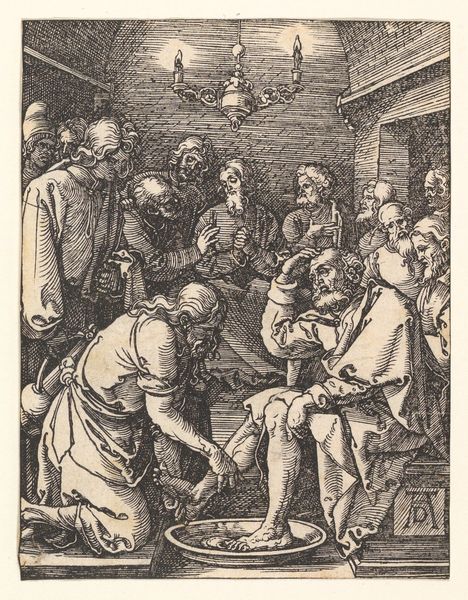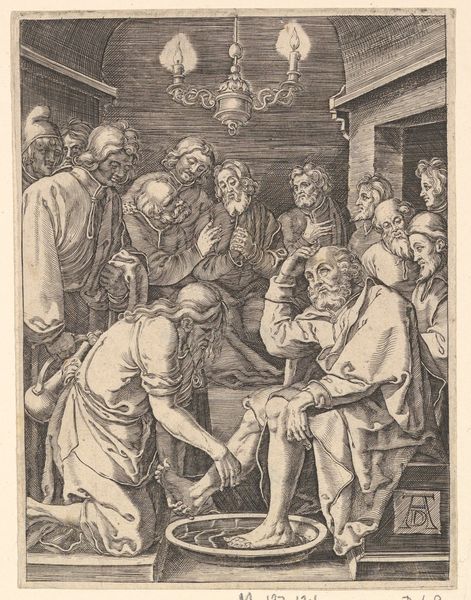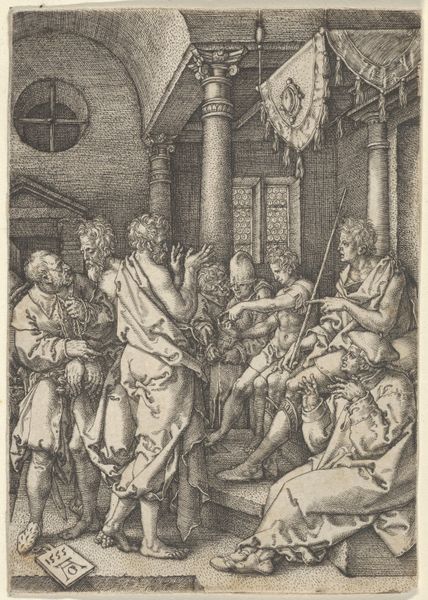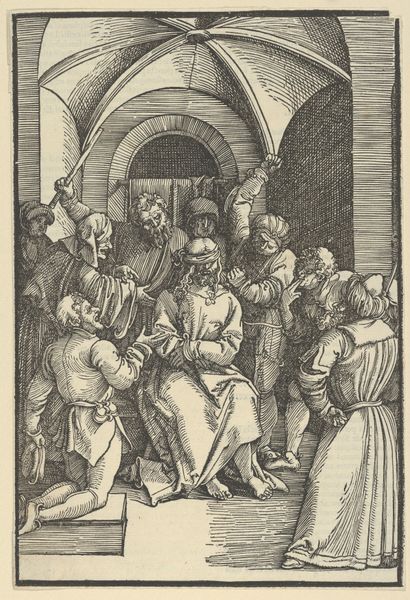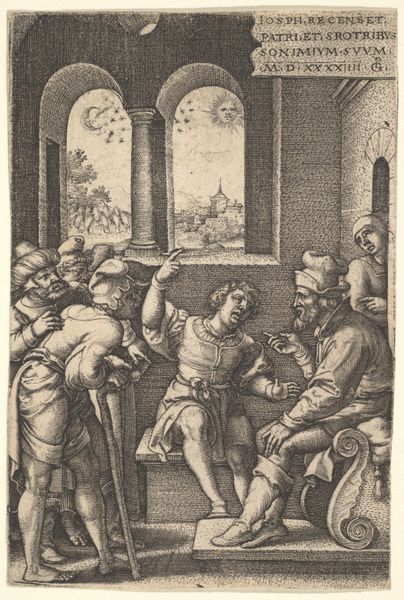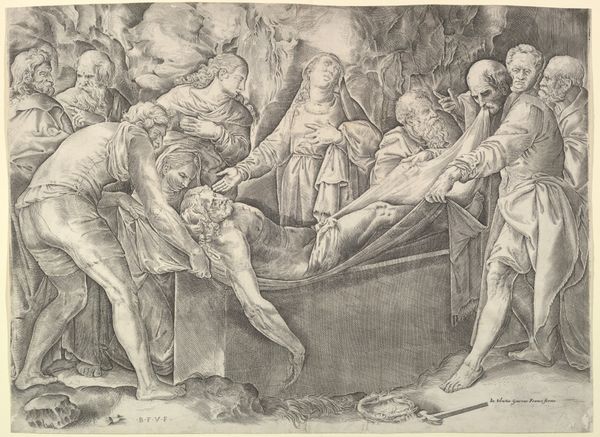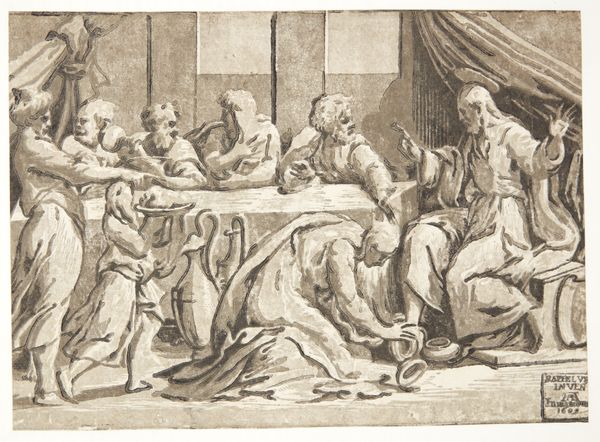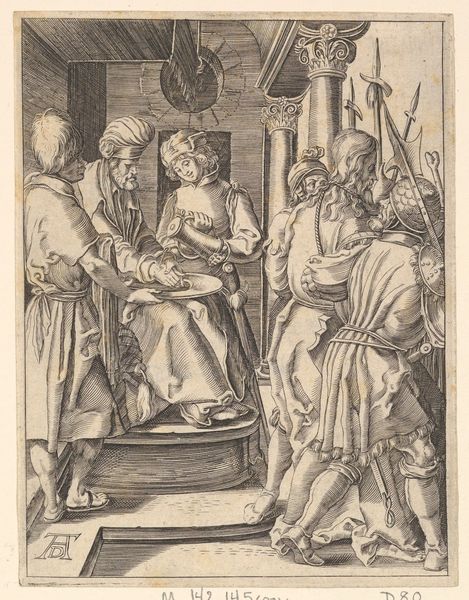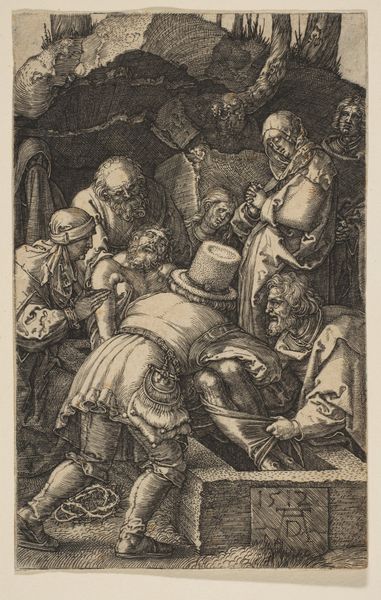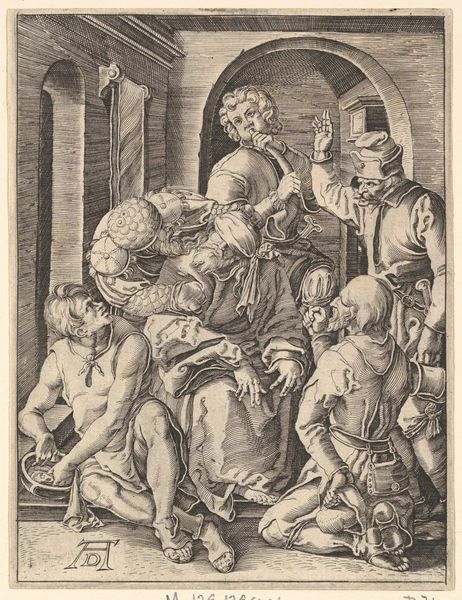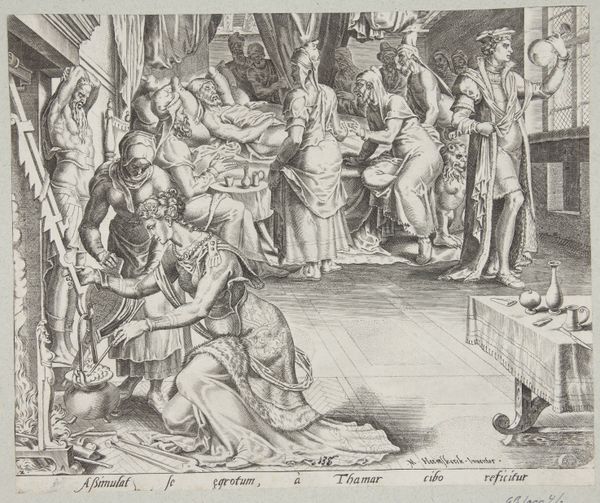
print, engraving
#
portrait
#
medieval
# print
#
figuration
#
history-painting
#
italian-renaissance
#
engraving
Dimensions: height 135 mm, width 104 mm
Copyright: Rijks Museum: Open Domain
Curator: Here we have Marcantonio Raimondi's "The Washing of Feet," an engraving made sometime between 1511 and 1534, currently housed at the Rijksmuseum. What strikes you about it? Editor: The stillness, maybe? Despite all the figures crowded together, there's a solemn silence in this room. It’s almost like holding my breath. You know that feeling? Curator: The composition emphasizes that, definitely. Note how Raimondi has rendered the interior: figures compressed, shallow space, the clear horizontal of the architecture contrasted against the activity in the foreground. It produces that stillness. Editor: Exactly! And there’s so much humanity in Peter’s reaction to Christ washing his feet – the shock, a little discomfort maybe? The light seems to cling to that moment. How was something like this produced back then? Curator: Well, engraving is an intaglio process. Lines are cut into a metal plate, usually copper, and then ink is applied to the recessed lines. The surface is wiped clean, and then, under high pressure, the image is transferred to paper. This allowed for reproductions, enabling wider dissemination of the image. Editor: It’s a world away from pressing 'print' on my laptop, isn't it? Looking closer, each figure is unique, so alive! Curator: That speaks to Raimondi's skill as a printmaker. The print is derived from a design by Raphael, which explains its composition and the classical quality of the figures, aligning it with the Italian Renaissance's interest in clarity, balance, and idealism. Editor: But the stark black and white—it's almost dramatic. It underscores the significance of service and humility. It reminds us that such simple gestures of care can change everything, right? Curator: Right. Through reproductive engravings such as these, artists could share important themes. The choice of engraving also aligns with the increasing demand for accessible and portable religious imagery at the time. Editor: Knowing how many steps it took makes me respect it even more, layers upon layers of intent and craft. Thanks for untangling that for me! Curator: My pleasure! It’s through understanding the means that we understand its message.
Comments
No comments
Be the first to comment and join the conversation on the ultimate creative platform.
